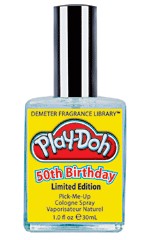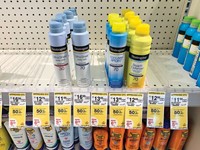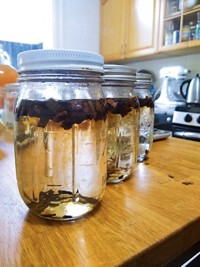Advertisement
Grab your lab coat. Let's get started
Welcome!
Welcome!
Create an account below to get 6 C&EN articles per month, receive newsletters and more - all free.
It seems this is your first time logging in online. Please enter the following information to continue.
As an ACS member you automatically get access to this site. All we need is few more details to create your reading experience.
Not you? Sign in with a different account.
Not you? Sign in with a different account.
ERROR 1
ERROR 1
ERROR 2
ERROR 2
ERROR 2
ERROR 2
ERROR 2
Password and Confirm password must match.
If you have an ACS member number, please enter it here so we can link this account to your membership. (optional)
ERROR 2
ACS values your privacy. By submitting your information, you are gaining access to C&EN and subscribing to our weekly newsletter. We use the information you provide to make your reading experience better, and we will never sell your data to third party members.
Education
Newscripts
Pop goes the molecule, Eau de Play-Doh, Benzene from acetone?
by Rachel Sheremeta Pepling
September 4, 2006
| A version of this story appeared in
Volume 84, Issue 36
Pop goes the molecule
Educators are always looking for innovative ways to help students visualize chemical structures. Kids of all ages love balloons, so why not combine the two? Three German chemists are promoting just that idea.
Rolf Eckhardt, Asif Karim (a certified balloon artist), and Marcus Rehbein created www.balloonmolecules.com. On the website, they provide instructions and demonstrations on how to pinch, twist, and knot balloons into buckyballs, faujasites, and DNA helices.
The trio explain in their FAQ section on the site that balloon models are a cheaper, more flexible alternative to kits. Unlike their plastic counterparts, balloons can be made into any compound at any size. Models take anywhere from 10 minutes to 10 hours to construct.
Best to brush up on your German language skills, however, as even more information exists on the German version of the site than the English one.
And what gives further validation to a method than an expert comment? The late Nobel Laureate Francis Crick once sent a brief message to the balloon-bending trio, commending them on the DNA model pictured on the site: "It's really remarkable how you have been able to show the key elements of the double helix with balloons."
Eau de Play-Doh
Familiar scents have a way of triggering childhood nostalgia: freshly baked chocolate chip cookies, freshly mowed lawns, freshly popped open cans of Play-Doh.
Demeter Fragrance Library seems intent on recapturing such scents in colognes and room sprays so that adults can spritz themselves down memory lane. Yes, even Play-Doh gets its own spray.
In honor of the childhood playtime staple's 50th birthday, Demeter collaborated with Play-Doh purveyor Hasbro to re-create the familiar scent. The cologne is for sale on Demeter's website and in select stores. A 1-oz cologne spray retails for $19; a 4-oz bottle goes for $39.50.
Demeter works with about 20 fragrance labs and uses a combination of natural extracts and synthetic compounds to achieve its lineup of exotic, yet familiar, aromas. Other popular scents include Dirt, Tomato, Thunderstorm, and Orange Cream Pop.
Play-Doh has become one of Demeter's best-selling fragrances since its May 1 launch. The company has "literally hundreds of orders a day," says Christopher Gale, cofounder and owner of Demeter. He says the perfume smells exactly like the colorful modeling clay. "People love nostalgic smells," Gale says.
Tripping down memory lane does sound appealing, but the Newscripts gang would much rather sniff Vanilla Cake Batter all day.
Benzene from acetone?
Robert L. Wolke of pittsburgh submitted an interesting query for the Newscripts gang. After purchasing a quart of acetone at a hardware store, he noticed the phrase "high strength" on the label. "Fortified with extra acetone, perhaps?" Wolke asks.
He also noticed a puzzling warning stating, "Use of this product will expose you to benzene, which is known to cause cancer." What's benzene doing with acetone?
A spokesperson from the acetone distributor helped address Wolke's query and confirmed that the acetone Wolke purchased is "100% acetone." The phrase "high strength" may have been used to indicate acetone as a strong solvent.
As for the benzene warning, California's Proposition 65 may be the reasoning behind the label. Proposition 65 requires that any product containing a contaminant either include a warning statement or undergo an exposure risk assessment that concludes no warning is required before it can be sold in California. The regulation has no lower threshold limit, so even products with trace amounts of a contaminant are subject to the requirements. In addition to risk assessments being complex and time-consuming, product formulations and raw material suppliers can change, so most companies opt for the warning label.
The raw material supplier's material safety data sheet for the acetone Wolke purchased included trace amounts of benzene as a contaminant, probably acquired from the use of common equipment or packaging lines during manufacturing. Therefore, the benzene warning label was included on the acetone container.






Join the conversation
Contact the reporter
Submit a Letter to the Editor for publication
Engage with us on Twitter